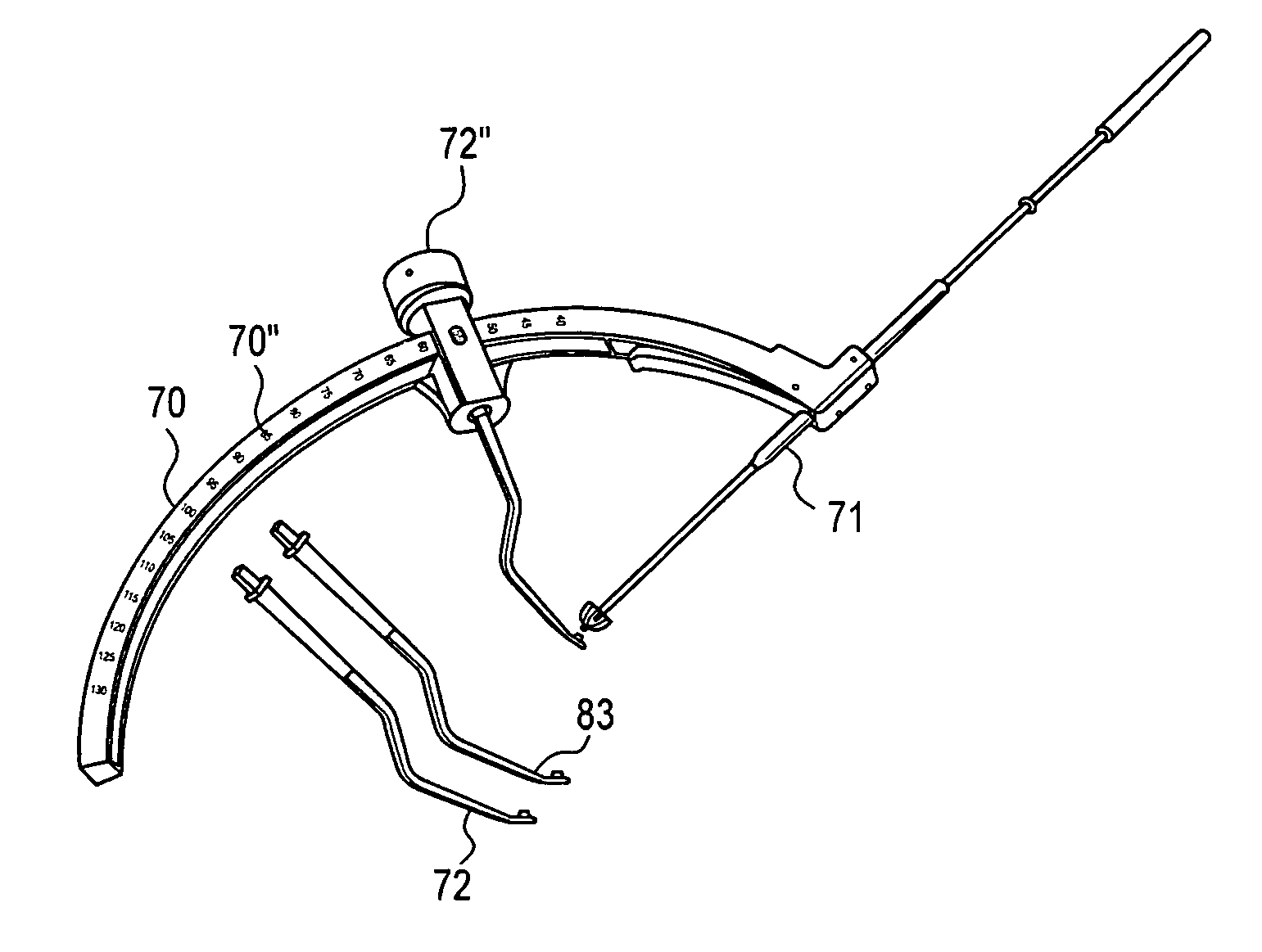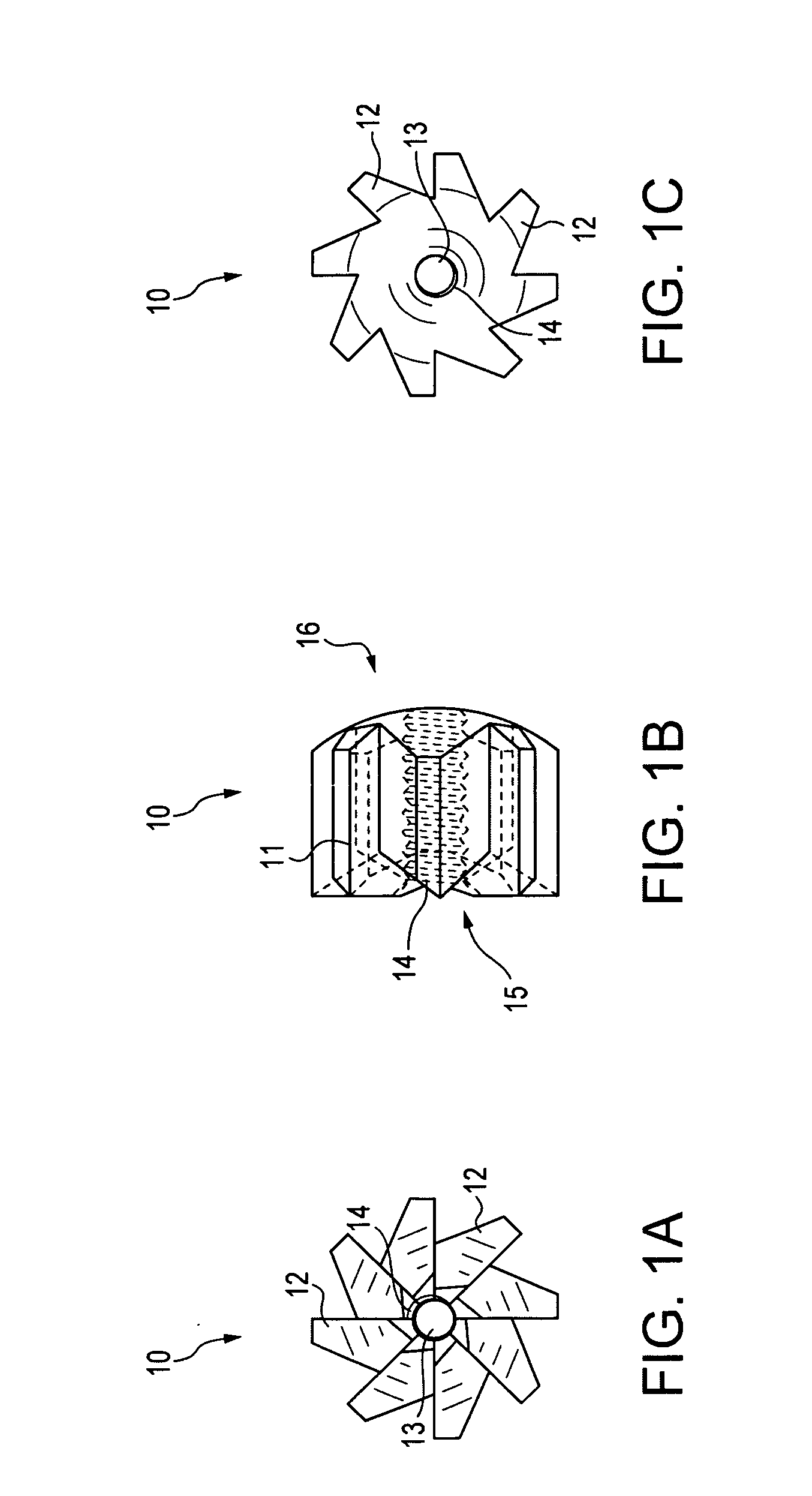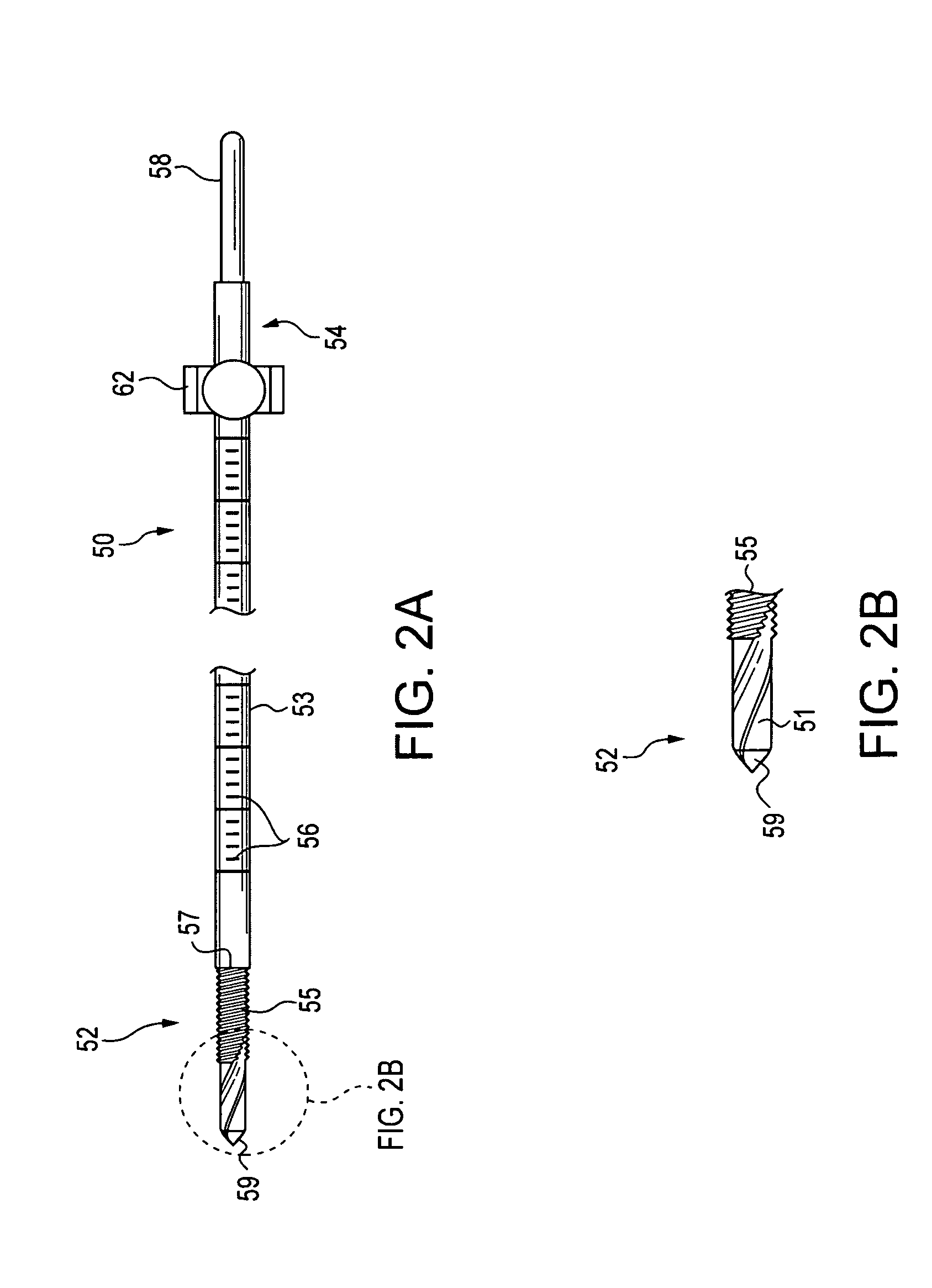Method and apparatus for ACL reconstruction using retrograde cutter
a retrograde cutter and knee technology, applied in the field of surgery, can solve the problems of difficult harvesting of bone cores in the joint, significant bone material removal in the formation of the tibial tunnel,
- Summary
- Abstract
- Description
- Claims
- Application Information
AI Technical Summary
Problems solved by technology
Method used
Image
Examples
Embodiment Construction
[0032] The present invention provides a technique for forming femoral and tibial bone sockets in a retrograde manner during ligament reconstruction, for example, anterior cruciate ligament (ACL) reconstruction. The present invention also provides a method of graft insertion and fixation employed in connection with the femoral and tibial sockets formed in accordance with the present invention.
[0033] Referring now to the drawings, where like elements are designated by like reference numerals, FIGS. 1-2 illustrate a retrograde rotary cutter 10 (FIGS. 1A-1C) which is adapted to be threadingly engaged with a cannulated retrograde drill pin 50 (FIGS. 2A-2C).
[0034] Referring to FIGS. 1A-1C, the retrograde rotary cutter 10 features a cylindrical body 11 having a plurality of cutting teeth 12 radiating symmetrically. A cannulation 13 through body 11 is provided with internal screw threads 14. Cutting teeth 12 have edges extending radially from cannulation 13 on a proximal cutting face 15, ...
PUM
 Login to View More
Login to View More Abstract
Description
Claims
Application Information
 Login to View More
Login to View More - R&D
- Intellectual Property
- Life Sciences
- Materials
- Tech Scout
- Unparalleled Data Quality
- Higher Quality Content
- 60% Fewer Hallucinations
Browse by: Latest US Patents, China's latest patents, Technical Efficacy Thesaurus, Application Domain, Technology Topic, Popular Technical Reports.
© 2025 PatSnap. All rights reserved.Legal|Privacy policy|Modern Slavery Act Transparency Statement|Sitemap|About US| Contact US: help@patsnap.com



